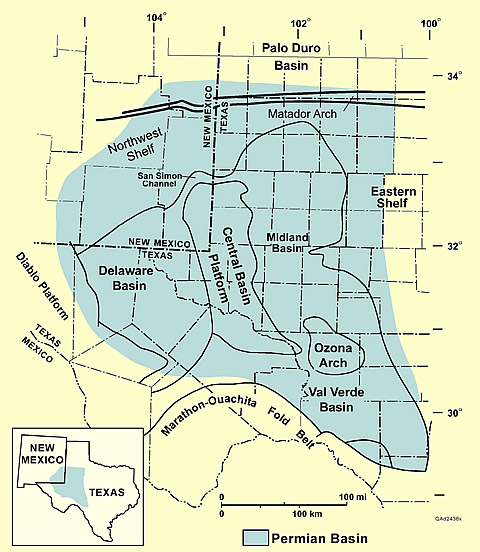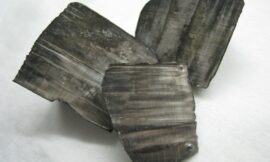This is the second episode in our series about the major producing oil and gas basins and plays in the US. The goal is to provide an overview of the key facts and things you should know. Please let us know if this is useful and if you have any requests on a particular area that you would like us to cover.
Using the embedded player above, you can download the episode to your computer or listen to it here! Be sure to also subscribe on iTunes or wherever you get your podcasts and please leave us an honest rating and review. We read every one of them and sincerely appreciate any feedback you have. To ask us a question to be featured on an upcoming episode, please leave a comment below or send an email to feedback@mineralrightspodcast.com.
As always, show notes at mineralrightspodcast.com, to ask question or feedback feedback@mineralrightspodcast.com
Location:
The Greater Permian Basin is a sedimentary basin primarily located in the western part of Texas and the southeastern part of New Mexico.
It reaches from just south of Lubbock, past Midland and Odessa, south nearly to the Rio Grande River in southern West Central Texas, and extending westward into the southeastern part of New Mexico.

Permian Basin Facts:
The greater Permian basin is made up of several areas from West to East:
- Delaware basin (second largest sub-basin)
- Central Basin Platform
- Midland Basin (largest sub-basin)
- To the North (in SE New Mexico) is the aptly named Northwest Platform
- It is LARGE: 250 miles wide x 300 miles long (75,000 square miles).
- Notable towns in Permian are Midland and Odessa which serve as hubs for oil and gas companies and service providers in the region.
- Production is a mix of oil and gas.
- Over 80 years of production, over 30 billion barrels of oil produced
- Around ¼ of US oil reserves are found in Permian
- The first commercial well drilled in the Permian was in Mitchell county – drilled in 1921 and completed in 1923 (the Santa Rita No. 1). This well produced for nearly 70 years before it was plugged in 1990.
Formations/Reservoirs:
- Permian is the largest petroleum producing basins in the US with 80% located less than 10,000 ft deep (so they are accessible w/current tech).
- Rich history of conventional oil & gas production from vertical wells – lithology of primary reservoirs used to be limestone, dolomite, and sandstone due to high porosity.
- Like we spoke about with DJ Basin, advancements in tech and combination of horizontal drilling and hydraulic fracturing expanded into unconventional reservoirs in tight sands and shales like the Wolfcamp shale.
- According to a recent study by IHS Markit, the Permian holds 60-70 BILLION barrels of yet to be produced crude oil. Recoverable reserves alone would be enough to supply every refinery in US for 12 years and at current prices would have a market value of around $3.3 trillion (I think is conservative – assume $60/bbl x 60B bbl = $3.6 T)
- Super basin in terms of oil and gas history and future potential.
- According to IHS, significant “variety of stack targets that are profitable at today’s oil prices”
- Put in comparison with other large oil and gas fields – on par with Ghawar Field Saudi Arabia which is world’s biggest oil field both by reserves and production (5 MMBBL/day production), as of 2013 was estimated to contain about 70 billion barrels of remaining oil reserves and 90 TCF of natural gas reserves…
Delaware Basin Formations
- The Bone Spring formation is the most drilled and most prolific zone in the Delaware.
- Other formations of note include the Yeso Trend, Wolfcamp Shale, and Avalon Shale
- Important areas for the Bone Spring are Eddy & Lea counties in New Mexico and Culberson and Ward counties in Texas.
- Other counties to note are Chaves County, NM; and Loving, Reeves, and Jeff Davis counties in TX.
Midland Basin Formations:
- Midland basin also stacked play with long history of vertical conventional oil and gas production.
- Primary focus is the Sprayberry and Wolfcamp. Commingled zone is sometimes referred to as the WolfBerry play.
- Highest producing oil field since 1993 is Sprayberry trend according to Texas RRC (just under 600 MMBBL cum prod).
- Other formations are the Clearfork, Dean, Strawn, and Barnett
- Primary Counties Include: Terry, Lynn, Gaines, Dawson, Borden, Martin, Howard, Midland, Glasscock, Upton, and Reagan.
Central Basin Platform Formations:
- Biggest from production standpoint as mentioned is San Andreas. This has historically been the primary focus.
- Now producing from secondary and tertiary recovery (water flood, CO2 flood).
- Counties include parts of Lea county in NM; and Gaines, Andrews, Winkler, Ector, Ward, Crane in TX.
Northwest Shelf Stratigraphy:
- Capitan reef closer to the border with the Delaware Basin. Capitan reef deposits along the edge of the Delaware basin became known as the capitan limestone. Permian sea was there and then it retreated and deposited evaporites (think salts and gypsum).
- Formations from the Guadalupian: Yates, Seven Rivers, Grayburg
- Leonardian formations: Victorio Peak dolomite then Bone Spring Limestone
- According to a study by University of Texas, up until 2000, the Northwest Shelf San Andreas Platform carbonate had yielded over 3.96 billion barrels of oil which makes it the largest oil play in the greater permian.
Future Outlook:
- Bright future for mineral owners. IHS Markit says production is expected to reach a total of 5.4 million barrels per day in 2023
- Will do this through nearly 41,000 new wells and $308 billion in upstream spending between 2018 and 2023.
As unconventional reserves are tapped, operators are learning more about the decline rates. One of the risks according to a recent study by Wood Makenzie shows that the decline rates for the first generation of tight oil wells are increasing. This means that month over month production rate is going down. The near term impact is minimal as so many new wells come on line but it means that operators will need to drill more wells in the future to maintain the levels of growth they have planned to meet the published targets.
Major Operators:
In 2018, the top 10 Acreage Holders were: Oxy, Chevron, Exxon Mobil, Apache, ConocoPhillips, Devon, Pioneer, Concho, EOG, and Cimarex.
With the recent acquisition of Anadarko by Oxy, “Oxy has become the largest operator in terms of land holdings and production in the DJ Basin in Colorado and the Uinta Basin in Utah. The deal increases daily production by about a quarter for Oxy in the Permian Basin that spans Texas and New Mexico, where it was already the top overall producer. The merger also will make Oxy the fourth-largest oil and gas producer in the Gulf of Mexico, a basin the company has not operated assets in for several years.” (Source: Society of Petroleum Engineers)
Interesting Articles:
Infrastructure: https://money.cnn.com/2018/06/28/investing/permian-basin-oil-texas/index.html
Pipeline takeaway capacity: https://news.ihsmarkit.com/press-release/energy/supermajors-need-invest-nearly-30-billion-permian-basin-through-2020-meet-volum
Frac Sand: https://ihsmarkit.com/research-analysis/frac-sand-demand-expected-to-exceed-peak-2014-levels.html
Thanks for Listening!
To share your thoughts:
- Leave a comment or question below (we read each one and your question may be featured in a future episode)!
- Ask a question or leave us feedback via email or voicemail: (720) 580-2088.
To help out the show:
- Subscribe and leave a review on iTunes or wherever you get your podcasts – we read each one and greatly appreciate it. Plus, you can get a shout out on a future episode!
Thanks again – until next time!



